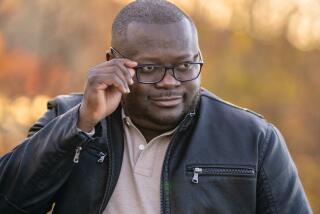Rice’s new tale inspired by her faith, not fantasy
- Share via
Novelist Anne Rice tends to take on subjects in a way that can raise eyebrows. Her 1976 novel, “Interview With the Vampire,” for instance, launched a successful subgenre of vampire erotica. Under the pseudonym A. N. Roquelaure, she penned a series of books on Sleeping Beauty, imbuing the narrative with a sexual desire unmentioned in the original fairy tale.
Though she is painstaking in creating the historical context of her novels -- medieval Kiev, Renaissance Venice, 19th century New Orleans -- her plots often move in directions for which readers may be unprepared.
Thus, one could be forgiven for entering her newest novel, “Christ the Lord: Out of Egypt” -- which re-creates the childhood of Jesus in Egypt and later in his family’s hometown of Nazareth -- with some trepidation.
When we encounter on the very first page the apocryphal story of a 7-year-old Jesus using powers he is only barely aware of to kill a neighborhood bully (whom he later restores to life), it’s natural to anticipate the twists that are certain to come.
But the earnest narrative that follows subverts those expectations: This is a straightforward tale, set firmly -- thanks to Rice’s considerable strengths in research -- in the geographic and historical context of the time and faithful to what she refers to as “the canonical framework,” even as it fills in the blank spots with imaginative detail.
The story is launched with the family’s decision to leave the Street of Carpenters in Alexandria, where they have been living in exile, and return to Nazareth. Joseph, the father, is told in a dream that King Herod, the slaughterer of infants, is dead and the family can go home.
Though adherence to the canon can reduce the narrative tension -- after all, if we know what’s going to happen, why read on? -- Rice retains our rapt attention with the use of small, visceral details. We can almost taste the food Jesus would have eaten, experience the sights and sounds, the chaos and bustle of a large clan, with which he would have been familiar.
We’re introduced to a world more brilliant and tangible than the sketchy outlines of the traditional narrative. And by limiting the scope of the story to his childhood, Rice can take her time delving into these rich particulars.
In Rice’s telling, for instance, Jesus’ family is not the holy triad of mother, father and son we’re familiar with but a large and boisterous extended family: Besides his “big brother” James, there are cousins and uncles and in-laws who participate in every aspect of the family’s life.
Uncle Cleopas, in fact, becomes an important model for Jesus, calling his attention to the money changers in the temple and inveighing against their desecration of God’s house. We see the seeds of Jesus’ later ministry planted in his youth.
Adding to the story’s appeal is the narrative voice of the young Jesus, who describes what he sees -- a Jewish rebellion against Roman rule, crushed mercilessly while the family first visits the temple in Jerusalem for Passover; the strange way he’s looked at by his cousin John (soon to be the Baptist); the consternation of the rabbi in Nazareth at his uncertain parentage.
The boy knows there is something strange about himself, connected with the mysterious powers he senses, and he struggles to piece the story together as his parents, particularly Joseph, withhold key information.
In an author’s note at the end of the novel, Rice explains that her desire to write the book arose as she returned to the Catholicism of her childhood after a lengthy absence. “Anybody could write about a liberal Jesus, a married Jesus, a gay Jesus, a Jesus who was a rebel,” she writes. “The true challenge was to take the Jesus of the Gospels ... and to try to get inside him and imagine what he felt.”
That’s what she has done -- though her afterword makes it clear that the novel is a kind of proselytizing tool. She is not trying to bring readers to Christianity so much as recommending that we take the Gospels’ depiction of Jesus at face value.
She rails against “skeptical” New Testament scholarship that considers the Gospels to have been written far too late to be reliable accounts, and Jesus simply as “a Hasid who got crucified.”
This novel, it seems, is her answer to skeptics. And though the afterword makes for an interesting look into the author’s motivation and meticulous research, it also reveals an agenda, which effectively robs the novel of some of its intrinsic joy.
Bernadette Murphy is a regular contributor to the Times Book Review and the author of “Zen and the Art of Knitting.”
More to Read
Sign up for our Book Club newsletter
Get the latest news, events and more from the Los Angeles Times Book Club, and help us get L.A. reading and talking.
You may occasionally receive promotional content from the Los Angeles Times.





